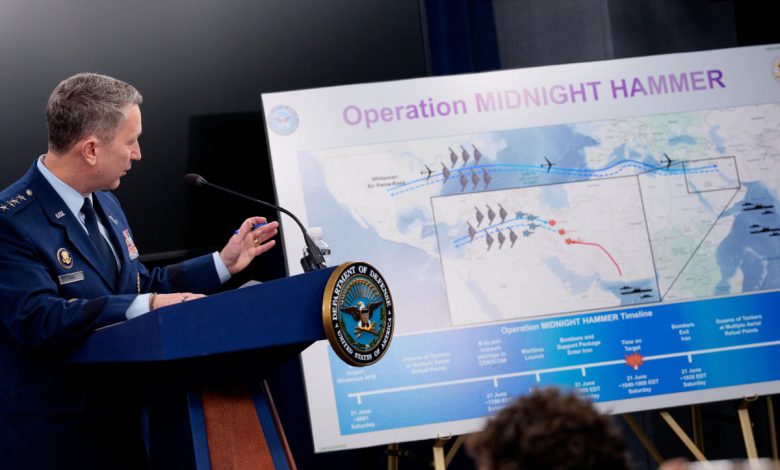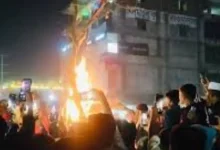Pentagon Reveals Details Of US Airstrikes On Iran’s Nuclear Sites In “Operation Midnight Hammer”

Less than a day after American forces launched precision airstrikes on Iranian nuclear facilities, the Pentagon has released a comprehensive briefing on the scope and intent of what it has formally codenamed Operation Midnight Hammer.
The mission, which began by midnight on Friday and into Saturday morning, targeted three of Iran’s most critical nuclear sites, Fordow, Natanz, and Isfahan, marking a sharp escalation in U.S. involvement in the ongoing regional conflict. According to military officials, the operation employed more than 125 aircraft and involved a calculated deception maneuver that included the deployment of bombers over the Pacific Ocean to divert attention from the actual strike force.
“The main strike package comprised of seven B-2 Spirit bombers, each with two crew members, proceeded quietly to the east with minimal communications throughout the 18-hour flight,” said General Dan Caine, Chairman of the Joint Chiefs of Staff, during a press briefing.
Caine added that “bombers dropped more than a dozen 30,000-pound (approx 13,608 kg) Massive Ordnance Penetrator bombs on two Iranian nuclear facilities, Fordow and Natanz, and Tomahawk missiles were launched at Isfahan.” The operation began at 6:40 p.m. ET and concluded by 7:05 p.m. ET, with all U.S. aircraft clearing Iranian airspace without incident.

This is the first instance of the US using this ammunition against Iran in the recent Middle East conflict, Caine shared, referencing the 14 bunker-buster bombs and more than two dozen Tomahawk missiles used in the strike.
Officials emphasized the operation’s precision and coordination, with Pentagon spokespersons describing it as a “complex and high-risk mission carried out with exceptional skill and discipline by the joint force.” They said the objective was to “severely degrade Iran’s nuclear weapon infrastructure” and showcase America’s ability to “project power globally.”
Operation Midnight Hammer had been shrouded in secrecy. “Very few people in Washington” were aware of its timing or specifics, Gen. Caine noted, highlighting the classified nature of the mission.
The air campaign came just days after President Donald Trump appeared undecided on whether the U.S. would engage directly in Israel’s confrontation with Iran. Despite initially saying he would make a decision within two weeks, the president authorized the mission just two days later and monitored the operation in real-time from the White House Situation Room.
The swift and coordinated strike represents a significant turning point in the Middle East, which has been engulfed in multiple conflicts including war in Gaza and Lebanon, and the collapse of Bashar al-Assad’s regime in Syria. Analysts say the airstrikes have sharply raised the risk of a broader regional war.
Also Read: Iran Turns To Russia; US Strikes On Iranian Nuclear Sites Failed, Causing Minor Damage Says Medvedev




